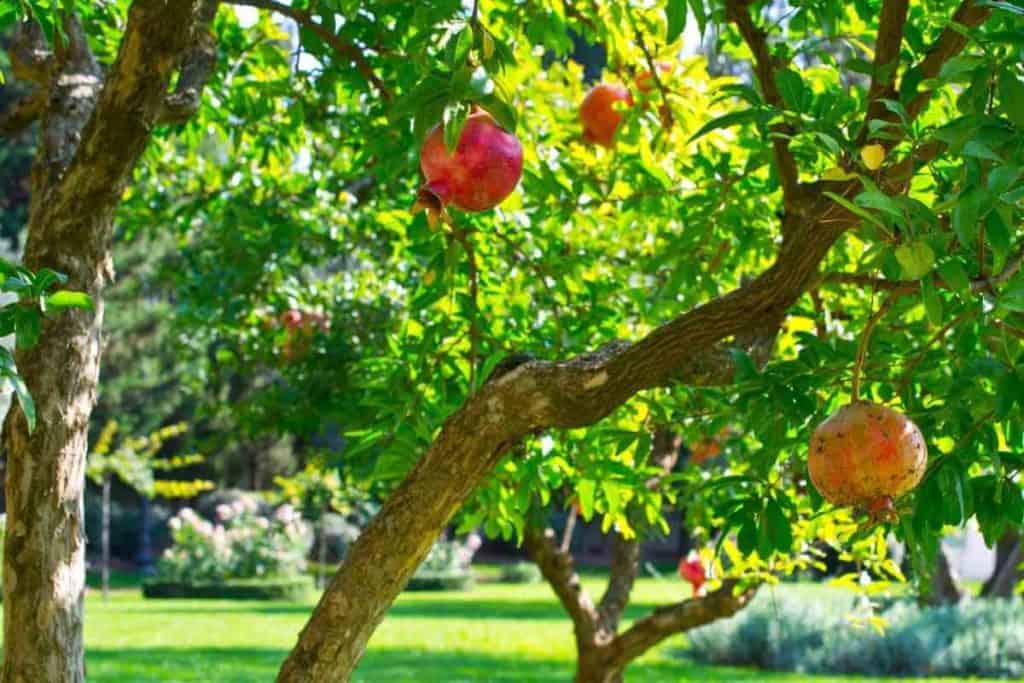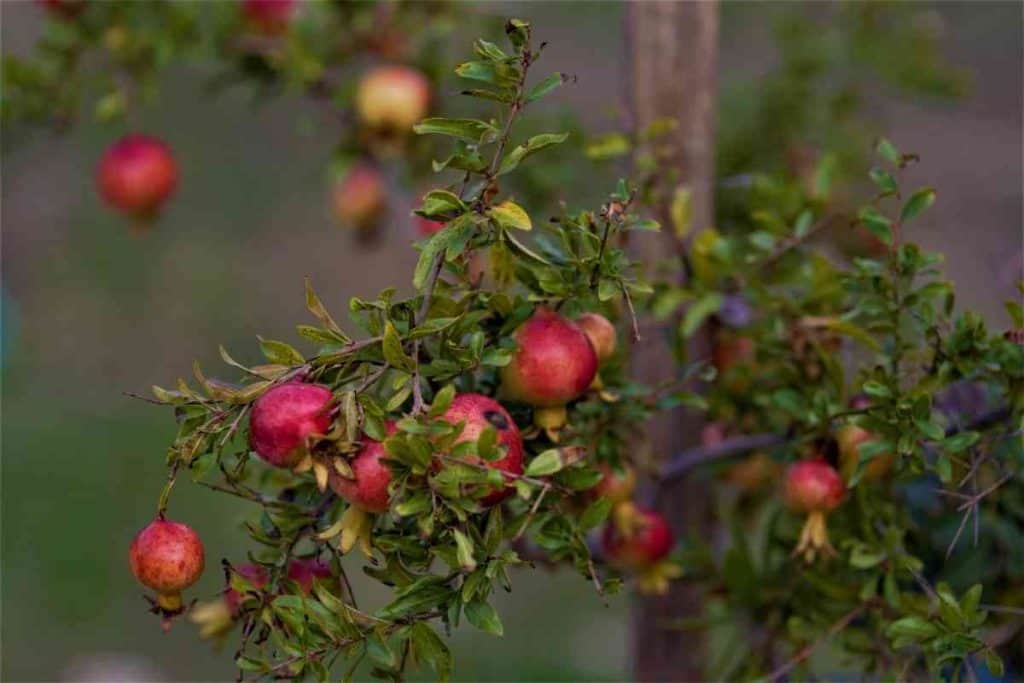Pomegranates are just one of the many beautiful fruits and vegetables that may be produced right in your backyard.
It might take up to 18 months for pomegranates to bear fruit, but the wait is well worth it! The good thing is that they are simple to grow and require little effort.
Pomegranate trees are drought resistant and can grow in a variety of regions. However, not everyone understands pomegranate growing stages from beginning to end.
Here are the different stages of growing pomegranate trees you need to know in order to successfully grow your own fruit that you can enjoy throughout the year!
Table of Contents
When is the Best Time to Grow Pomegranate?
Pomegranates, like other trees, are best planted in the spring (Between March and June).
Plant them in the winter (Between December and March) if the ground is frozen or your location sees strong cold, and avoid planting them in the summer (between June and September) when the heat would stress the tree.
See Also: Different Carrots Growing Stages
Pomegranate Growing Stages

While pomegranate trees can yield fruit for many years, they do not begin their lives completely loaded.
In truth, pomegranate trees (Punica granatum) go through several stages of development before they begin to bear fruit. Once the pomegranate seed reaches a spot of fertile earth, several stages begin.
Stage 1: Germination
Pomegranate seeds germinate even if they are not buried on the surface of loosely packed ground, where they grow in a variety of soil types.
Unlike monocot plants like magnolias, pomegranates develop two seed leaves as they germinate.
The pomegranate grows its initial roots, burrowing into the ground and absorbing nutrients from the environment outside of the seed packet. The plant grows more leaves over time, which aids photosynthesis and provides enough energy for the plant to flourish.
Stage 2: Sapling
A healthy pomegranate tree begins to take on the features of an older tree after the initial sprouting period.
The core stem of the plant gets woodier in the sapling stage, and the beginnings of secondary branches appear.
If you are attempting to establish a tree that produces sweet-tasting fruit, you should pay extra attention to this stage. Pomegranate trees, like many other fruit trees, have a lot of genetic variation when they’re grown from seed.
As a result, you may opt to transplant a bud from an established tree that produces the delicious fruit. Nonetheless, grafting is not as successful in pomegranate trees as it is in other fruits.
Read Also: Different Broccoli Growing Stages
Stage 3: Maturity
The tree’s height and girth increase as it continues to take in energy.
Pomegranates, such as the “Angel Red” pomegranate (Punica granatum), can reach a height of 10 feet when fully matured, which takes around five to six years.
The pomegranate can then support the weight of the pomegranate fruit as it reaches maturity.
Stage 4: Flowering and Fruiting

A pomegranate tree will produce flowers every year in late summer unless it is starved, wounded, or sick.
When these blossoms are close enough to other pomegranate trees for cross pollination, they have the best chance of producing fruit. The pomegranate tree will yield fruit up to seven months after initial flowering once fertilized.
Frequently Asked Questions
How long does it take for a pomegranate tree to grow?
This deciduous shrub can reach a height of 12 to 20 feet (3.5 to 6) and a width of almost the same. When developing a pomegranate tree, patience is essential because the fruit takes five to seven months to mature, and the tree takes two to three years to bear more than a few fruits.
How long does it take a pomegranate flower to fruit?
Flowering begins in late spring and continues into summer, with fruit maturing 5 to 7 months later under ideal conditions. For a nice flavor, high temperatures are required during fruit development.
Read Also: Growing Stages of Eggplant
Do Pomegranate flowers turn to Pomegranate?
Pomegranate trees are self-fruitful, which implies that their blossoms are both male and female. Male and unfertilized female pomegranate flowers fall off naturally, while fertilized female flowers remain to bear fruit.
Do Pomegranate trees grow fast?
The pomegranate prefers direct sunlight. It can withstand droughts but prefers damp soil. Start pruning in the second year, leaving only the vigorous suckers to develop into a firm base for a tree that can grow up to 2 feet every year and reach a mature height of 20 feet.
Are Pomegranate trees easy to grow?
They’re simple to grow. Pomegranate trees are drought resistant and require little water to thrive. It’s a good idea to fertilize in the spring, although it’s not necessary. They’re naturally acclimated to Mediterranean climates with mild winters and scorching summers, making them ideal for California gardens.
Do Pomegranate trees produce fruit every year?
Pomegranate trees can bloom up to three times in the spring, with each bloom producing fruit. Pomegranates bloom throughout the summer, and they bloom in the spring and then again in flushes during the summer and fall.
Furthermore, pomegranate trees lose their strength after about 15 years; however, certain cultivars might thrive for hundreds of years. Pomegranate fruit is picked between October and January.
What month do Pomegranate trees bloom?
Pomegranates have a long blooming season (April–June); however, later-blooming blooms may not have enough time to mature into fully ripe fruit.
Most pomegranates take 6–7 months to ripen, so blooms that bloom in April and May should be available between Halloween and Thanksgiving.
Read Also: Growing Stages of Asparagus
Conclusion
Pomegranates are the ideal fruit for folks who enjoy sweets. They can be served as a snack, consumed as a breakfast substitute, or used as a dessert ingredient.
Pomegranates have several benefits, including high quantities of antioxidants and other nutrients, in addition to being delicious. Hopefully, you already know the various pomegranate growing stages and what to expect when growing a pomegranates tree.




